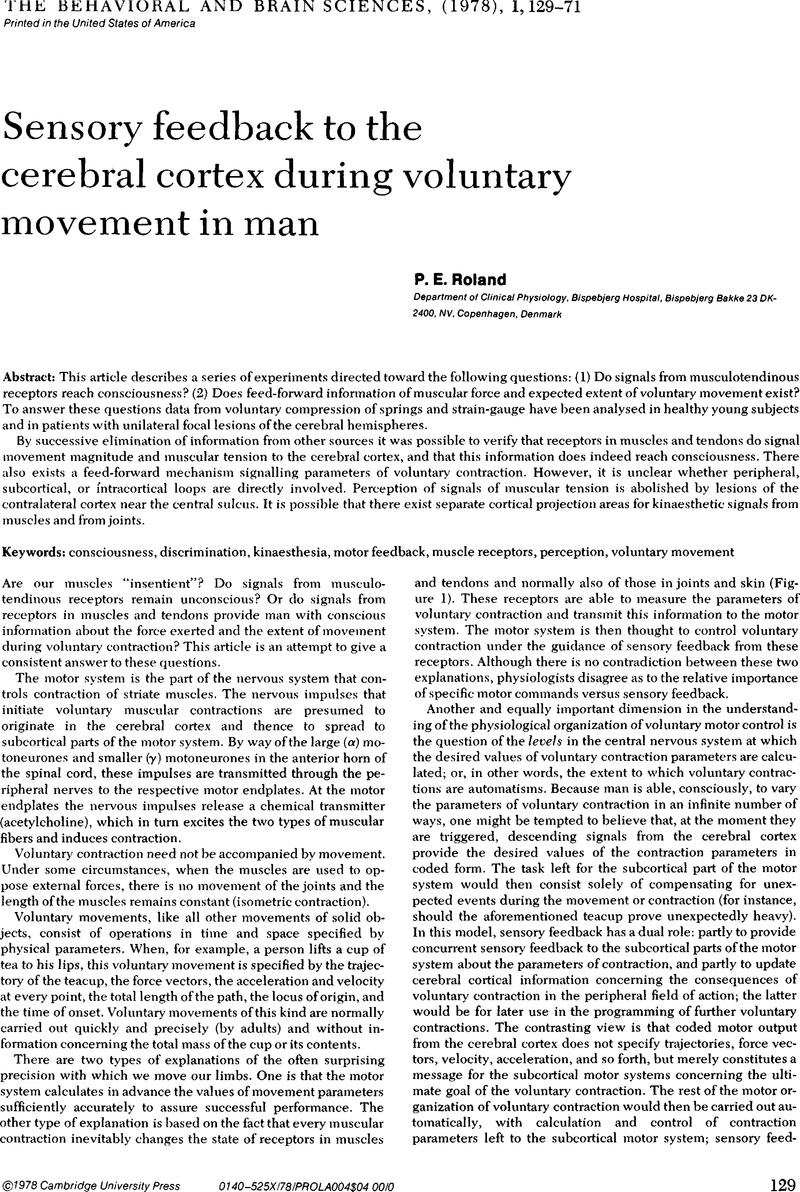No CrossRef data available.
Article contents
On the role of mental set in voluntary movement
Published online by Cambridge University Press: 04 February 2010
Abstract
An abstract is not available for this content so a preview has been provided. Please use the Get access link above for information on how to access this content.

Information
- Type
- Open Peer Commentary
- Information
- Copyright
- Copyright © Cambridge University Press 1978
References
REFERENCES
Boring, E. G.A History of Experimental Psychology. 2nd ed. New York, Appleton-Century-Crofts, 1950.Google Scholar
Liebman, R. S., and Levitt, M.Position sense after combined spinal tractotomies and cerebellectomies in macaques. Experimental Neurology 40:170–82.1973.CrossRefGoogle ScholarPubMed
Mountcastle, V. B., Poggio, G. F., and Werner, G.The relation of thalamic cell response to peripheral stimuli varied over an intensive continuum Journal of Neurophysiology. 26:807–34.1963.CrossRefGoogle ScholarPubMed
Paillard, J., and Brouchon, M. Active and passive movements in the calibration of position sense. In: Freedman, S. J. (ed.), The Neuropsychology of Spatially Oriented Behavior, pp. 37–55. Homewood, 111., The Dorsey Press, 1968.Google Scholar
Velasco, M., Velasco, F., Maldonado, H., and Machado, J. P.Differential effect of thalamic and subthalamic lesions on early and late components of the somatic evoked potentials in man. EEG and Clinical Neurophysiology. 39:163–71.1975.Google ScholarPubMed

